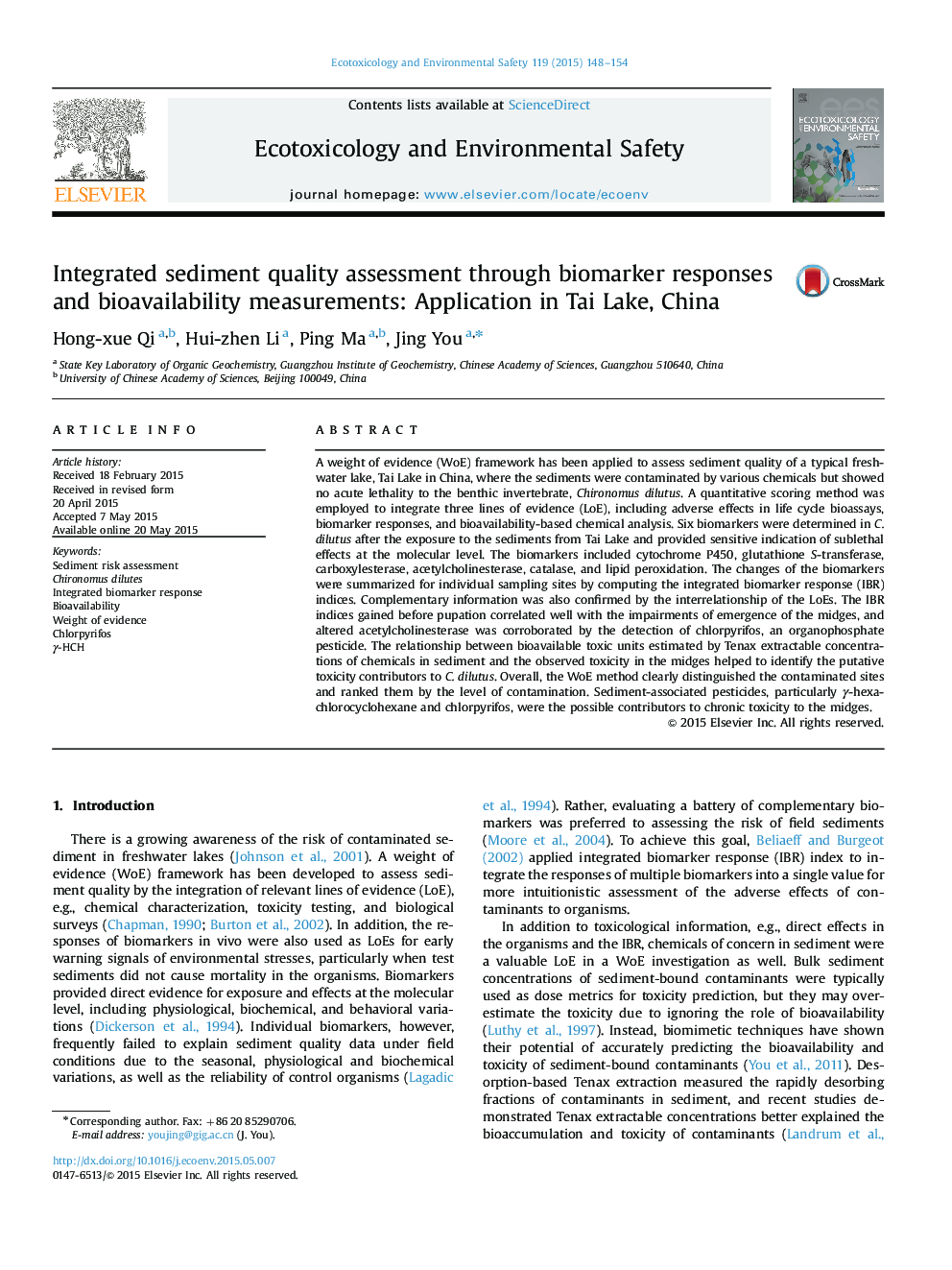| کد مقاله | کد نشریه | سال انتشار | مقاله انگلیسی | نسخه تمام متن |
|---|---|---|---|---|
| 4419620 | 1618944 | 2015 | 7 صفحه PDF | دانلود رایگان |
• Sediment quality in Tai Lake was assessed using a weight-of-evidence framework.
• Contaminated sites were ranked by the level of contamination with a scoring method.
• Integrated biomarker response indices correlated with the emergence of the midges.
• Bioavailability-based measurements improved accuracy in toxicant identification.
• Chlorpyrifos and γ-HCH were identified as key organic toxicants in sediments.
A weight of evidence (WoE) framework has been applied to assess sediment quality of a typical freshwater lake, Tai Lake in China, where the sediments were contaminated by various chemicals but showed no acute lethality to the benthic invertebrate, Chironomus dilutus. A quantitative scoring method was employed to integrate three lines of evidence (LoE), including adverse effects in life cycle bioassays, biomarker responses, and bioavailability-based chemical analysis. Six biomarkers were determined in C. dilutus after the exposure to the sediments from Tai Lake and provided sensitive indication of sublethal effects at the molecular level. The biomarkers included cytochrome P450, glutathione S-transferase, carboxylesterase, acetylcholinesterase, catalase, and lipid peroxidation. The changes of the biomarkers were summarized for individual sampling sites by computing the integrated biomarker response (IBR) indices. Complementary information was also confirmed by the interrelationship of the LoEs. The IBR indices gained before pupation correlated well with the impairments of emergence of the midges, and altered acetylcholinesterase was corroborated by the detection of chlorpyrifos, an organophosphate pesticide. The relationship between bioavailable toxic units estimated by Tenax extractable concentrations of chemicals in sediment and the observed toxicity in the midges helped to identify the putative toxicity contributors to C. dilutus. Overall, the WoE method clearly distinguished the contaminated sites and ranked them by the level of contamination. Sediment-associated pesticides, particularly γ-hexachlorocyclohexane and chlorpyrifos, were the possible contributors to chronic toxicity to the midges.
Figure optionsDownload as PowerPoint slide
Journal: Ecotoxicology and Environmental Safety - Volume 119, September 2015, Pages 148–154
